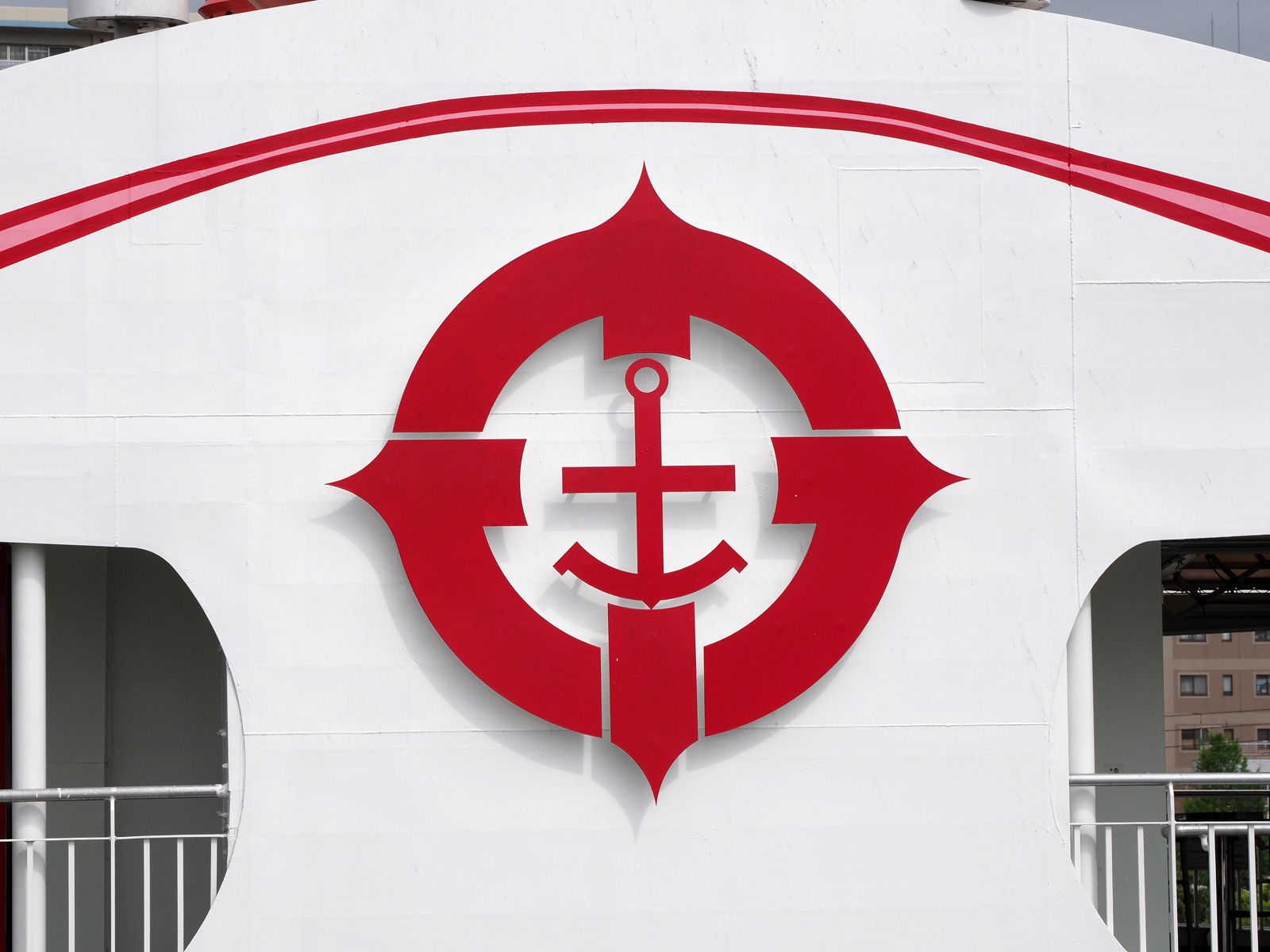Sakurajima Ferry on:
[Wikipedia]
[Google]
[Amazon]
The is Japanese
 In 1914, the eruption of Mt.
In 1914, the eruption of Mt.
File:Sakurajima Ferry Toll Gate 2016.JPG, The Toll Gate of Sakurajima Ferry (November 5, 2016)
File:SakurajimaFerry.jpg, ''Sakurajima-maru No. 18'' (July 9, 2004)
File:Sakurajimamaru8.JPG, ''Sakurajima-maru No. 8'' (March 22, 2002)
File:Sakurajima Ferry udon.jpg, Udon of Yabukin and Mt. Sakurajima
File:鹿児島港.jpg, Kagoshima ferry terminal
File:Sakurajima-new-Port-Ferry-Terminal.jpg, Sakurajima ferry terminal
Sakurajima Ferry
* {{Facebook, sakurajima.ferry Ferries of Japan Kagoshima
ferry
A ferry is a ship, watercraft or amphibious vehicle used to carry passengers, and sometimes vehicles and cargo, across a body of water. A passenger ferry with many stops, such as in Venice, Italy, is sometimes called a water bus or water taxi ...
which links between Kagoshima Port and Sakurajima
Sakurajima ( ja, 桜島, literally "Cherry Blossom Island") is an active stratovolcano, formerly an island and now a peninsula, in Kagoshima Prefecture in Kyushu, Japan. The lava flows of the 1914 eruption connected it with the Ōsumi Peninsul ...
Port, both in Kagoshima
, abbreviated to , is the capital city of Kagoshima Prefecture, Japan. Located at the southwestern tip of the island of Kyushu, Kagoshima is the largest city in the prefecture by some margin. It has been nicknamed the "Naples of the Eastern wor ...
prefecture.
It is administered by Kagoshima City Ship Department.
Overview
 In 1914, the eruption of Mt.
In 1914, the eruption of Mt. Sakurajima
Sakurajima ( ja, 桜島, literally "Cherry Blossom Island") is an active stratovolcano, formerly an island and now a peninsula, in Kagoshima Prefecture in Kyushu, Japan. The lava flows of the 1914 eruption connected it with the Ōsumi Peninsul ...
affected the islands inhabitants. They demanded a regular ferry service between Sakurajima and Kagoshima City for emergency restoration and commuting as part of educational development. Thus, a ferry line was established by Sakurajima village office on November 19, 1934. The number of ferries increased, and nowadays there is one ferry every 10 minutes during the daytime and every hour during the night. It takes about 13 minutes to go the 3.5 km across the bay. In 2004, the ferries carried 5.5 million people and 1.64 million vehicles. The reason for there being such a large number of passengers way beyond the number of inhabitants in Sakurajima is the great reduction in the time required compared with the land route.
In the event of Sakurajima erupting, there are special places to anchor the ferry for evacuation of the inhabitants. When heavy rains caused floods in August 1993, Sakurajima ferries helped to rescue residents cut off in the Ryūgamizu area. At the time, the Ryūgamizu area had no place for ferries to anchor, so local fishing boats helped take people from the shore to the ferries.
During summer, one ferry is operated as excursion ship (to enjoy sights, drinking and in some instances fireworks
Fireworks are a class of Explosive, low explosive Pyrotechnics, pyrotechnic devices used for aesthetic and entertainment purposes. They are most commonly used in fireworks displays (also called a fireworks show or pyrotechnics), combining a l ...
). Ferries can also be chartered for weddings, etc.
There is an udon
Udon ( or ) is a thick noodle made from wheat flour, used in Japanese cuisine. It is a comfort food for many Japanese people. There are a variety of ways it is prepared and served. Its simplest form is in a hot soup as with a mild broth called ...
restaurant called Yabukin on each ferry. In spite of that people have to eat the udon in a mere 15 minutes, it is extremely popular.
Chronology
*August 1930: ''Shōwa-maru'' launched (with 70 seats) *November 19, 1934: Service started *October 1939: Started to connect with bases of Sakurajima *1941: ''Sakurajima-maru'' launched (can carry three freight cars) *July 1, 1944: Quay maintenance finished and started to carry cars *October 1951: Two ferries were damaged by Typhoon Ruth *December 1962 - March 1970:Hydrofoil
A hydrofoil is a lifting surface, or foil, that operates in water. They are similar in appearance and purpose to aerofoils used by aeroplanes. Boats that use hydrofoil technology are also simply termed hydrofoils. As a hydrofoil craft gains sp ...
service started
*1974: Service every 10 minutes started
*1978: Summer excursion ships started
*April 1984: 24-hours service started
*August 6, 1993: Involved in rescue operations in Ryūgamizu
*November 1, 2004: With the merger of Sakurajima town into Kagoshima city, the administering authority changed from Sakurajima town to Kagoshima city
Ferries in service
*''Sakurajima-maru'' – Completed in November, 1987, 502 tonnes, 53m long *''Sakurajima-maru No. 15'' – Completed in January 1995 1,134 tonnes, 56.1m long, nicknamed ''Cherry Queen'' *''Sakurajima-maru No. 16'' – Completed in January 1999, 997 tonnes, 54.2m long, nicknamed ''Dolphin Liner'' *''Sakurajima-maru No. 18'' – Completed in February 2003, 1,279 tonnes, 56.1m long, nicknamed ''Princess Marine'', the ferry is barrier-free *''Sakurajima-maru-'' Completed in February 2011, 1330 tons, 57.36m long, nicknamed ''Sakura Angel'' *''Sakurajima-maru'' No.2- completed March 2015, 1404 tons, 59 m long, nicknamed ''Sakura Fairy''Gallery
References
*External links
Sakurajima Ferry
* {{Facebook, sakurajima.ferry Ferries of Japan Kagoshima